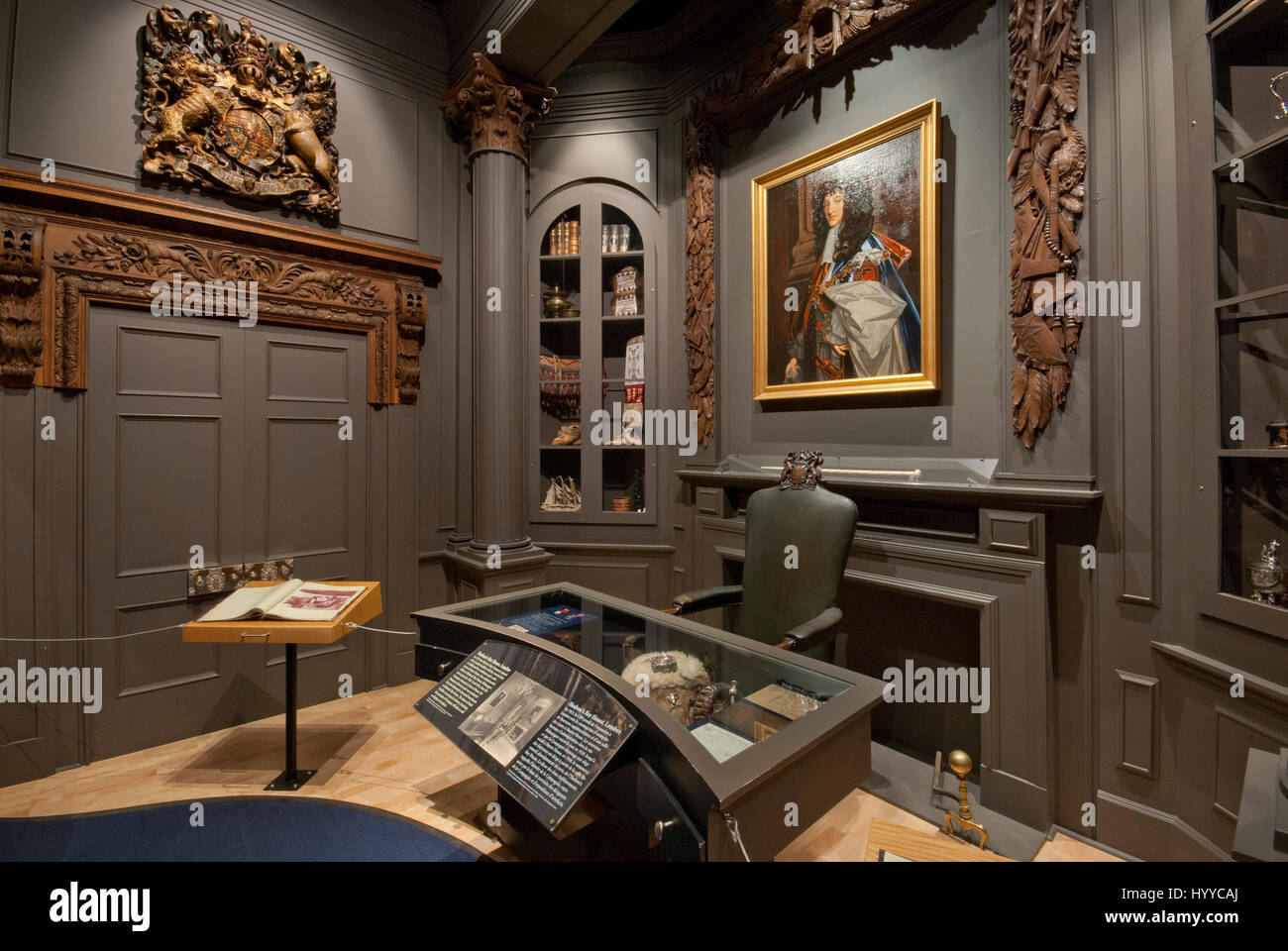Manitoba Museum And Hudson's Bay Company Artifacts: Shared History

Table of Contents
The Manitoba Museum's HBC Collection: A Treasure Trove of History
The Manitoba Museum boasts a truly exceptional collection of Hudson's Bay Company artifacts, offering a comprehensive look at the company's extensive influence on Manitoba and its Indigenous populations. These artifacts represent more than just trade goods; they tell a story of cultural exchange, economic development, and the complex interplay between European traders and Indigenous communities. The collection provides invaluable insight into the fur trade era and its lasting impact on the province's identity.
Fur Trade Artifacts: Symbols of a Defining Era
The fur trade artifacts within the Manitoba Museum's collection are particularly compelling, offering tangible links to a pivotal period in Manitoba's history. These objects showcase the materials, tools, and goods that defined the era.
- Beaver pelts: These prized pelts were the economic engine of the fur trade, driving exploration, settlement, and the establishment of trading posts across the vast landscape of what is now Manitoba. Their presence highlights the central role fur played in shaping the province's early economy.
- Indigenous-made tools: The museum's collection showcases the craftsmanship of Indigenous peoples, demonstrating their sophisticated knowledge of the land and their resourcefulness in creating tools for hunting, fishing, and everyday life. These artifacts reveal the vital role Indigenous communities played in the fur trade, often as both suppliers of furs and skilled artisans.
- Trade goods from Europe: Items such as European textiles, metal tools, and firearms illustrate the global reach of the HBC and the exchange of goods that occurred. These artifacts reveal the flow of goods and ideas across the Atlantic, demonstrating the interconnectedness of global trade networks even in this remote part of North America.
Documents and Records: Unveiling the Stories Behind the Artifacts
Beyond the tangible objects, the Manitoba Museum houses a wealth of archival documents that provide invaluable context to the HBC artifacts. These records paint a vivid picture of the lives of those involved in the fur trade, offering insight into their motivations, challenges, and experiences.
- HBC ledgers: These meticulously kept records provide a detailed account of trade volumes, economic transactions, and the financial workings of the HBC. They offer a glimpse into the economic engine driving the fur trade and its impact on the company's growth.
- Personal journals: The personal journals of HBC employees, traders, and explorers offer a fascinating window into daily life during the fur trade era. These intimate accounts reveal personal struggles, triumphs, and insights into the individuals who shaped this period.
- Maps and charts: These cartographic records document the vast geographical reach of the HBC's operations across Manitoba and beyond. They showcase the exploration and mapping of the region, highlighting the company's role in expanding geographical knowledge.
Exploring the Impact of the HBC on Manitoba's History
The Hudson's Bay Company's impact on Manitoba's history is profound and multifaceted, extending far beyond the mere economic aspects of the fur trade. Its legacy is interwoven with the province's cultural, social, and political development.
Indigenous Relations and the Fur Trade
The relationship between the HBC and Indigenous peoples of Manitoba was complex and often fraught with tension, but also involved periods of cooperation and cultural exchange.
- Treaty-making: The signing of treaties between the HBC and Indigenous nations had a profound and lasting impact on land ownership, resource management, and Indigenous self-determination. These treaties are central to understanding the contemporary relationship between Indigenous communities and the Canadian government.
- Trade relationships: The economic aspects of the fur trade heavily influenced Indigenous livelihoods, economies, and social structures. Analyzing these trade relationships requires a nuanced understanding of the power dynamics at play.
- Cultural exchange: Despite the inherent power imbalances, cultural exchange occurred between Indigenous peoples and European traders. This exchange, however, should be examined critically, recognizing its impacts on both cultures.
The HBC's Role in Shaping Manitoba's Development
The HBC played a significant role in shaping Manitoba's infrastructure and settlement patterns.
- Establishment of trading posts: These posts were not just centers of trade; they served as hubs for settlement, connecting remote communities and contributing to the development of transportation networks.
- Infrastructure development: While often motivated by economic considerations, the HBC's activities contributed to the development of rudimentary infrastructure, such as roads and waterways, which laid the foundation for future development.
- Economic impact: The HBC's economic activities fundamentally shaped Manitoba's economy for generations, impacting resource management, settlement patterns, and the province’s overall trajectory.
Visiting the Manitoba Museum: Experiencing History First-Hand
The Manitoba Museum offers a captivating and enriching experience for visitors of all ages who wish to learn more about Manitoba's rich history.
Planning Your Visit
- Location: The Manitoba Museum is located at 190 Rupert Avenue, Winnipeg, MB.
- Hours of operation: Check the Manitoba Museum website for up-to-date hours.
- Admission fees: Admission fees vary; check the museum's website for details.
- Accessibility: The Manitoba Museum is committed to accessibility and offers various services for visitors with disabilities.
Educational Resources and Programs
The Manitoba Museum offers a range of educational resources, workshops, and school programs related to the HBC and the fur trade. These resources provide valuable learning opportunities for students and adults alike. Check their website for details on current offerings.
Conclusion
The Manitoba Museum's collection of Hudson's Bay Company artifacts offers an unparalleled opportunity to explore a pivotal chapter in Manitoba's history. These artifacts, along with the supporting archival documents, provide a rich and nuanced understanding of the fur trade, its impact on Indigenous peoples, and its role in shaping the province's development. By visiting the Manitoba Museum and exploring these Manitoba Museum Hudson's Bay Company Artifacts, you can gain a deeper appreciation for Manitoba's complex and compelling past. Plan your visit today and delve into this fascinating aspect of Manitoba’s history! [Link to Manitoba Museum Website]

Featured Posts
-
 Crisis In De Tbs Zorg Structurele Problemen En Lange Wachttijden
May 01, 2025
Crisis In De Tbs Zorg Structurele Problemen En Lange Wachttijden
May 01, 2025 -
 Sf Actor Workshop Co Founder Priscilla Pointer Dies At 100
May 01, 2025
Sf Actor Workshop Co Founder Priscilla Pointer Dies At 100
May 01, 2025 -
 Two Bartlett Texas Structures Destroyed In Fire Total Loss Amid Red Flag Warning
May 01, 2025
Two Bartlett Texas Structures Destroyed In Fire Total Loss Amid Red Flag Warning
May 01, 2025 -
 Healthcare Experience Management Nrc Healths Best In Klas Recognition
May 01, 2025
Healthcare Experience Management Nrc Healths Best In Klas Recognition
May 01, 2025 -
 Il Cardinale Becciu Mi Infangano Indagine Sulle Chat Segrete
May 01, 2025
Il Cardinale Becciu Mi Infangano Indagine Sulle Chat Segrete
May 01, 2025
Latest Posts
-
 Chat Pubblicate Da Domani Il Complotto Becciu E Le Accuse Ai Miei Danni
May 01, 2025
Chat Pubblicate Da Domani Il Complotto Becciu E Le Accuse Ai Miei Danni
May 01, 2025 -
 Unfair Trial Allegations Cardinal Becciu And New Found Evidence
May 01, 2025
Unfair Trial Allegations Cardinal Becciu And New Found Evidence
May 01, 2025 -
 Il Risarcimento Di Becciu La Beffa Dopo Il Danno
May 01, 2025
Il Risarcimento Di Becciu La Beffa Dopo Il Danno
May 01, 2025 -
 Preghiere Per Becciu Un Approfondimento Sul Suo Caso E Le Sue Dimissioni
May 01, 2025
Preghiere Per Becciu Un Approfondimento Sul Suo Caso E Le Sue Dimissioni
May 01, 2025 -
 Becciu Deve Risarcire Gli Accusatori Oltre Il Danno La Beffa
May 01, 2025
Becciu Deve Risarcire Gli Accusatori Oltre Il Danno La Beffa
May 01, 2025
